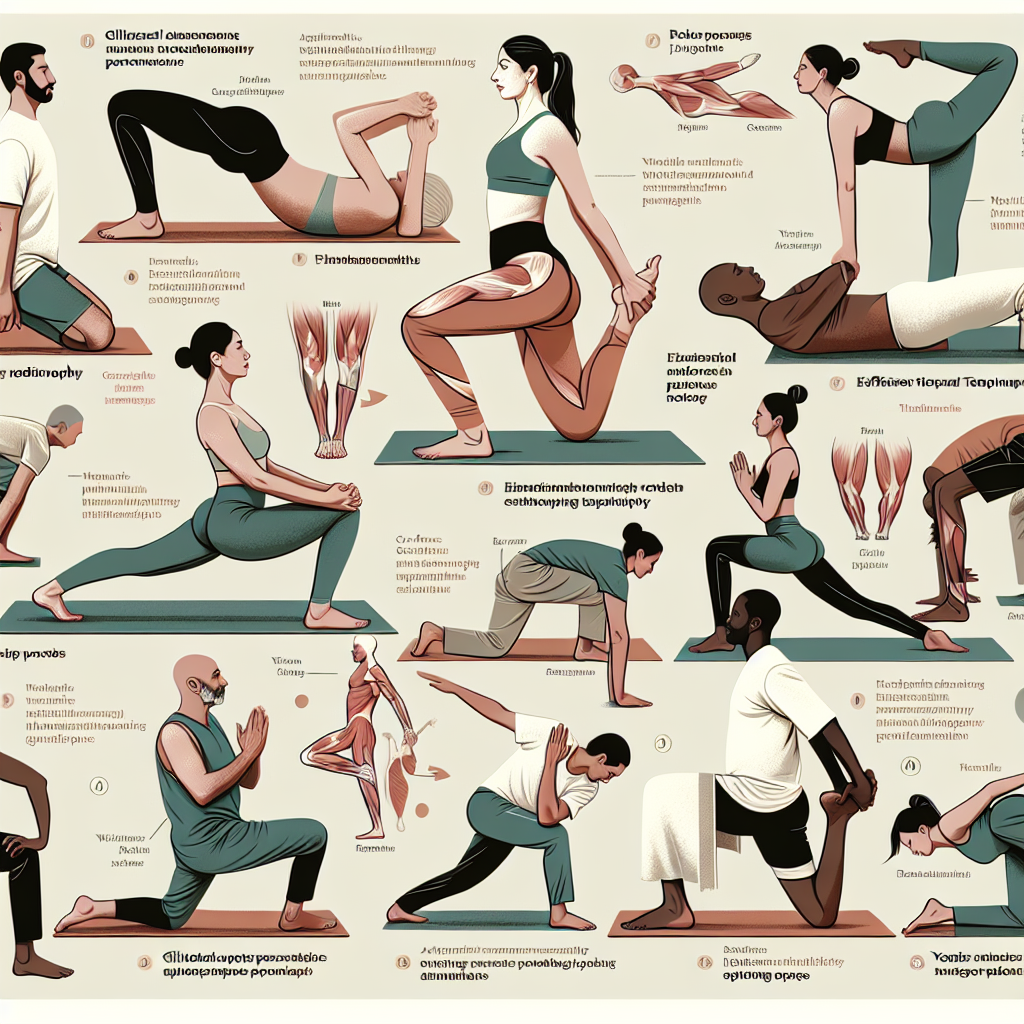===INTRO:===
Are you struggling with the debilitating effects of gluteal tendinopathy? This condition can severely impact your ability to perform everyday movements, from walking to climbing stairs. The discomfort can be a constant reminder of what you once enjoyed—physical activities that seemed effortless. Fortunately, effective yoga techniques can serve as a powerful ally in managing tendon pain and restoring your quality of life. This guide aims to unveil strategies that can help you alleviate discomfort and regain strength and mobility through mindful practices.
Understanding Gluteal Tendinopathy and Its Impact on Movement
Gluteal tendinopathy is a condition characterized by the degeneration of tendons in the gluteal muscles, often leading to pain and dysfunction in the hip area. It commonly affects individuals who engage in repetitive activities such as running or cycling, particularly those with weak hip muscles or poor biomechanics. The pain usually manifests on the outer side of the hip and can radiate down the thigh, making it challenging to perform even simple daily tasks.
One of the most significant consequences of gluteal tendinopathy is its impact on mobility. Individuals may find themselves avoiding certain movements to prevent discomfort, resulting in a vicious cycle of weakness and further pain. This restricted range of motion can lead to compensatory patterns in other muscle groups, heightening the risk of additional injuries. The emotional toll of chronic pain often leads to frustration, anxiety, or even depression, making it critical to address the situation holistically.
Understanding the underlying causes of gluteal tendinopathy is essential for effective management. Factors such as age, lifestyle choices, and muscle imbalances play a crucial role in the onset of this condition. Awareness of these elements allows individuals to tailor their approach to recovery, utilizing techniques that not only alleviate symptoms but also strengthen the affected areas to prevent future occurrences.
Effective Yoga Techniques to Alleviate Tendon Pain
Yoga offers a treasure trove of techniques that can be particularly effective for managing gluteal tendinopathy. By focusing on stretching, strengthening, and balancing the muscles surrounding the hip, yoga can help promote healing and restore function. One of the most beneficial poses for this condition is the Pigeon Pose, which stretches the gluteal and hip muscles while releasing tension in the affected area. To perform this pose, start in a tabletop position, bring one knee forward towards your wrist, and extend the opposite leg back. Hold for several breaths, allowing gravity to assist the stretch.
In addition to targeted poses, the practice of mindful breathing during yoga sessions serves as a form of mental and physical release. Techniques such as Ujjayi breath can help calm the nervous system, reducing pain perception and promoting relaxation. Focusing on deep, intentional breaths as you move through your practice can create a meditative state, enhancing body awareness and encouraging a deeper connection to your physical sensations. This approach allows individuals to listen to their bodies, adjusting their movements to avoid exacerbating discomfort while fostering a sense of empowerment.
Moreover, incorporating restorative poses into your routine is crucial for managing gluteal tendinopathy. Child’s Pose and Supta Baddha Konasana (Reclining Bound Angle Pose) are excellent for relieving tension in the hips while providing a gentle stretch without straining the tendons. Spend several minutes in each pose, allowing your body to relax and release any accumulated stress. By integrating these yoga techniques, individuals can create a holistic approach to recovery, addressing both physical and emotional aspects of their condition.
===OUTRO:===
Embracing effective yoga techniques for managing gluteal tendinopathy can dramatically improve your quality of life. By understanding the underlying mechanisms of your condition and incorporating mindful movements into your routine, you can regain control over your body and alleviate discomfort. Start today by exploring these techniques, and consider joining a yoga class focused on rehabilitation to deepen your practice. Empower yourself with the knowledge and tools to navigate your healing journey, and don’t hesitate to consult with a healthcare professional for personalized guidance. Your path to recovery and enhanced mobility begins now.
Managing Degenerative Disc Disease: The Role of YogaSubmitting Your Web Wrapped Curio: A Step-by-Step GuideStrategic Hiding Spots in Life is Strange Pool SceneRelevant LinkRelevant LinkRelevant LinkExploring the Impact of 40,000 Daily Steps on Weight LossEffective Yoga Poses for Optimal Weight Loss and WellnessComprehensive Reviews of Happy Mammoth Weight Loss ProgramRelevant LinkRelevant LinkRelevant Link




